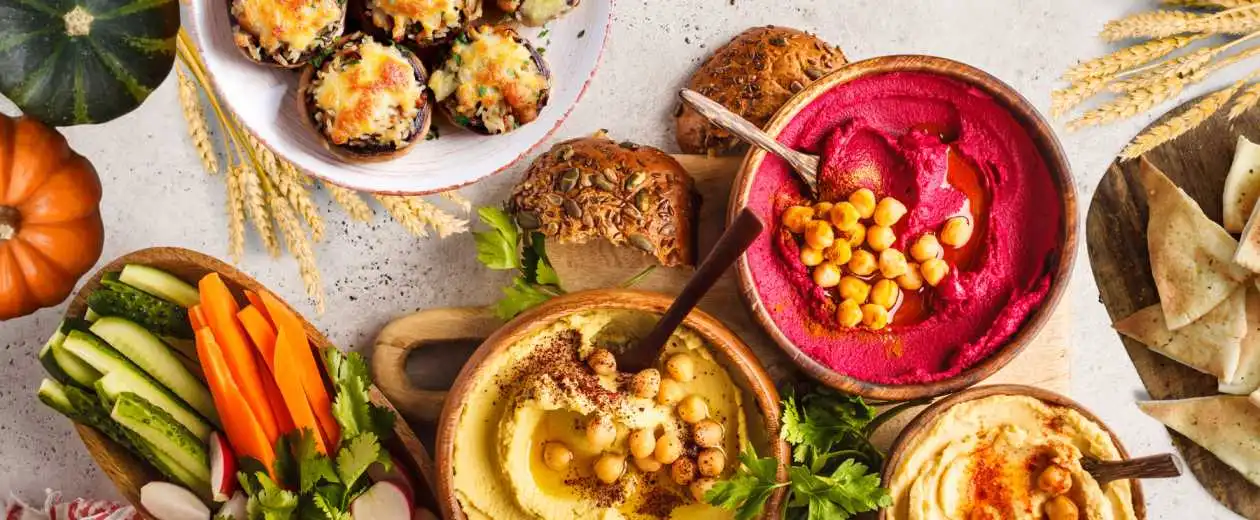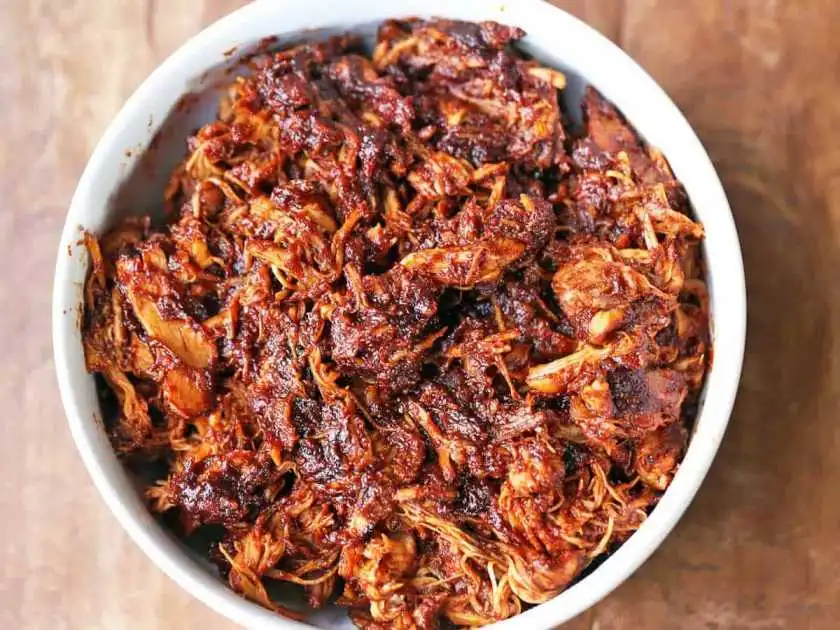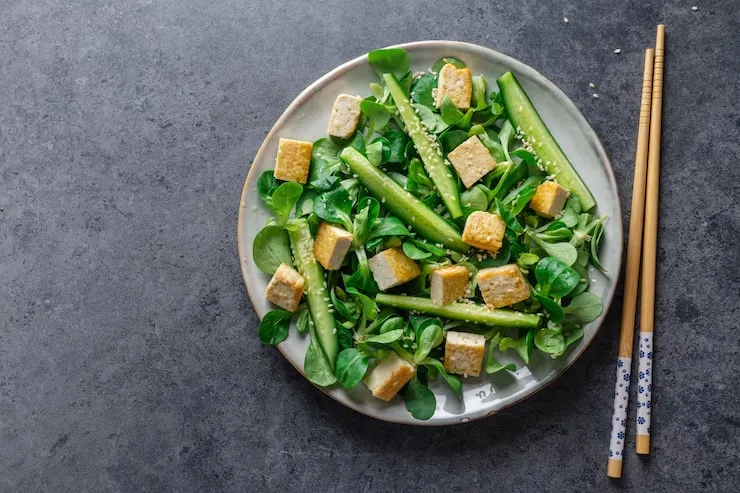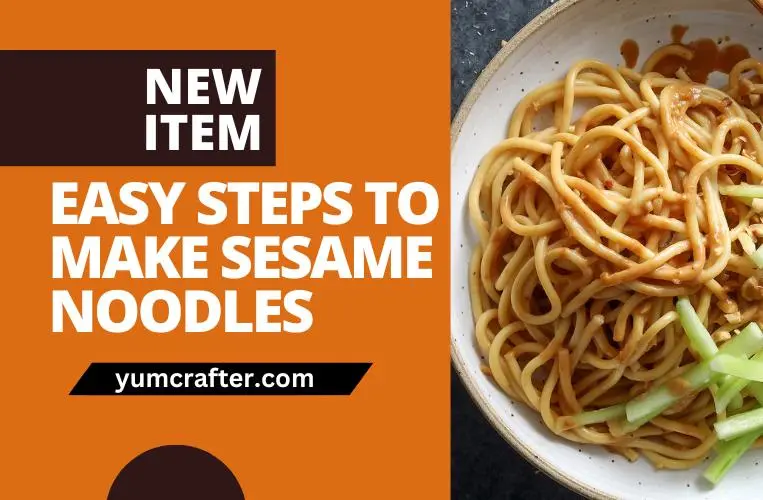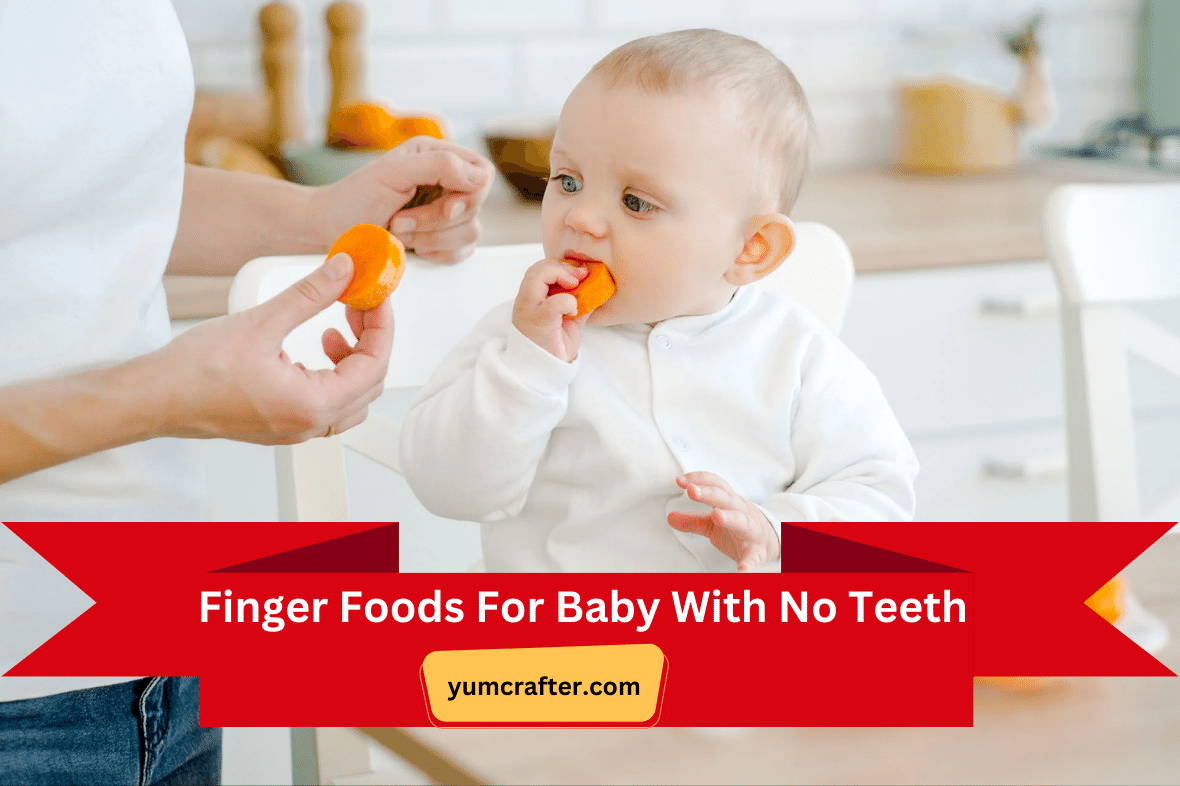
For many parents, feeding their newborns is a monumental effort. However, as the newborns develop, they like sampling new tastes and sensations. They will no longer desire simply mashed or pureed foods. This is when you should introduce finger meals to your infant. Finger meals for newborns provide more than simply nourishment. They also assist newborns develop their fine motor abilities. Are you wondering what finger foods you can serve your child? Read on to discover about 16 nutritious finger foods that your baby can eat even if he doesn't have teeth yet.
At what age may babies begin eating finger foods?
Babies normally begin eating finger foods between the ages of 6 and 9 months, although the precise age at which they are ready varies each kid. Keep an eye out for indicators of preparedness and seek advice from your physician.
What is the ideal size for baby finger foods?
The optimal size for infant finger meals is tiny and controllable to avoid choking problems. Finger meals should be chopped into pieces around the size of a pea or a baby's pinky fingernail. As infants' fine motor skills improve and they get more feeding experience, you may progressively introduce bigger pieces. However, make sure that the pieces are small enough for your infant to handle securely and pleasantly.
Is it possible for toothless babies to eat finger foods?
Yes, toothless newborns can swallow finger foods. Babies don't need teeth to consume finger foods since their gums can crush and grind soft food. When serving finger meals to toothless newborns, choose items that are soft and readily gummed. Always observe your baby as they eat to reduce the danger of choking, and make sure the finger foods you supply are adequately sized and prepared for gumming.
Read also: How To Cook Bacon In The Oven
How do you introduce finger food to a baby?
Introducing finger foods to a baby is a crucial milestone in their development, and it should be done carefully to guarantee safety and a pleasant eating experience. Here's a step-by-step tutorial for introducing finger foods to a newborn.
1. Check for Readiness.
Before introducing finger foods, ensure that your infant is developmentally prepared. They should be able to sit up with minimum assistance, have lost their tongue push reflex, and exhibit a desire for food.
2. Select Age-appropriate Foods.
Choose soft, easily digestible, and age-appropriate meals for your infant. Examples include little bits of ripe fruit, cooked and chopped vegetables, baby cereal puffs, and soft, well-prepared pasta.
3. Prepare the food.
Make sure the finger snacks are chopped into tiny, bite-size pieces. To avoid choking dangers, keep pieces around the size of a pea or your baby's pinky fingernail.
Read also: Hot Blue Cheese Dip
4. Wash hands.
Always wash your hands before handling your baby's food for sanitary reasons.
5. Establish a safe eating environment.
Choose a secure and pleasant environment for your baby to dine in. A highchair with a sturdy safety harness is essential.
6. Supervision.
Never leave your kid unsupervised when consuming finger foods. To reduce the danger of choking, always supervise attentively.
7. Show
Teach your infant how to pick up and chew finger foods. Encourage them to use their fingers to grip and investigate the food.
8. Serve one food at a time.
Begin by serving one variety of finger food at a time. This allows your infant to grow comfortable with the taste and feel of different foods before introducing them.
Read also: White Chocolate Brownies
9. Be patient.
Babies may take some time to adjust to finger meals. They may play with or refuse the food at first. Be patient and provide a variety of meals over time.
10. Gradually increase variety.
Introduce a variety of textures and tastes as your baby develops more used to finger meals. This helps to broaden their palette and exposes them to new nutrients.
11. Check for Allergies.
Take note of any symptoms of food allergies or sensitivities. Common allergens such as eggs, dairy, and nuts should be introduced one at a time and monitored for any adverse reactions.
12. Encourage self-feeding.
Allow your infant to practice self-feeding as often as possible. This helps children improve their fine motor skills and independence.
- Easy Pantry Pasta with Evaporated Milk
- Loaded Slow Cooker Sloppy Joes
- Ritz Cracker Broccoli Cheese Casserole
- Salted Chocolate Pretzel Toffee Bark
- Make Ahead Butterhorn Dinner Rolls
13. Stay Positive
Mealtime should be a joyful and pleasurable experience. Avoid pressuring your kid to eat and instead provide a pleasant and supportive environment.
Remember that each infant is unique, and their preparedness and preferences may vary. If you have any worries or questions about introducing finger foods to your infant, see your doctor for advice customized to your child's individual requirements.
16 Healthy Finger Foods for a Baby with No Teeth
Parents might find it difficult to introduce finger foods to their babies. Prepare for potential mess, allergies, and choking concerns when your baby begins eating finger food. So, are finger foods not suitable for infants without teeth? No, finger foods are good for teethless newborns since they can simply pick them up and mash them between their gums.
If you're wondering what finger foods you can prepare for your child, we've got you covered. Here are some finger meal suggestions for infants without teeth. These may be swapped with other meal choices to offer your child with a healthy snack on a daily basis. Do not forget to feed your infant calcium-rich meals to assist strengthen his bones.
1. Pasta
Pasta, with its delicate flavor, may be the first finger meal for newborns without teeth. Pasta softens when overdone, making it simple for newborns without teeth to consume.
Ingredients:
- Penne pasta or shell-shaped pasta.
- Olive oil or butter
- Tomato puree
How To Make:
- Boil water and boil the pasta until soft and mushy.
- In a skillet, heat some butter or olive oil and add the cooked pasta. Stir for 1 minute, then add the tomato puree.
- Allow the spaghetti to cool before giving it to your baby.
2. Homemade Baby Biscuits
Homemade baby biscuits are a great snack for babies 8 months and above. The recipe is for 18-20 biscuits approximately. You may increase the measure to the ingredients if you’d like to make extra biscuits. Also, remember to skip the ingredients your baby is allergic to.
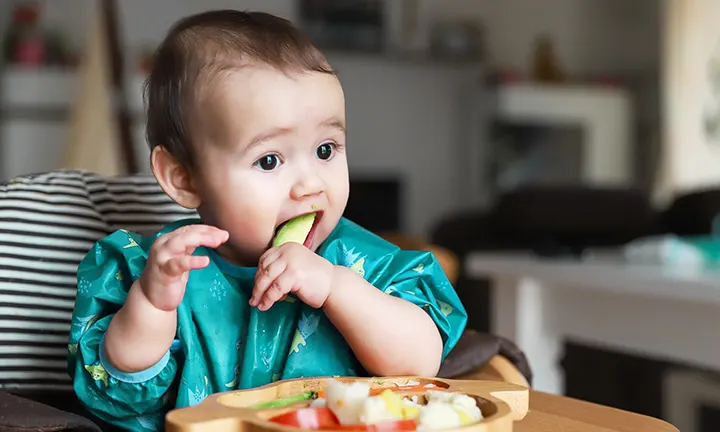
Ingredients:
- 1/4 cup ground oats.
- 1/2 cup butter/peanut butter.
- 2 tablespoons ground flax seeds.
- 1 cup chickpea flour.
- 1/3 cup honey or maple syrup.
- 1 banana, mashed
- 1 teaspoon baking soda.
- 2 teaspoons vanilla essence.
- 1-2 tablespoons water (if needed)
How To Make:
- Place a cup of chickpea flour in the freezer for around half an hour (this will assist create the proper consistency and texture for baking).
- Meanwhile, combine the butter, honey or maple syrup, mashed banana, vanilla essence, and baking soda.
- In another basin, combine the chickpea flour.
- Combine the ground oats and flax seeds.
- Now, using your hands, combine everything until you get a cookie dough texture.
- Make little balls of dough and set them aside.
- Take a baking tray and line it with butter paper.
- Flatten the cookie dough balls onto the butter paper.
- Bake the cookies for about 12 minutes in a preheated oven at 350°F (175°C).
- After 12 minutes, remove the biscuits and carefully push a fork into the center of each to remove any air pockets.
- Give one of the cookies to your infant only after they have totally cooled.
Also read: : Breakfast Burgers with Bacon Jam
3. Baby Quiche Cakes
Baby quiche cakes are an excellent method to supplement your baby's veggie intake. These cakes may be prepared in batches and refrigerated for up to three days in an airtight container. Let's find out how they're created.
Ingredients:
- 2-3 cups of whole wheat flour.
- 1/4 cup olive oil.
- 3-5 cups of diced or chopped veggies (carrots, spinach, broccoli/cauliflower, peas, etc.)
- Four bananas (mashed)
- 1 cup grated cheddar cheese.
- 1 ½ cups yogurt
- 1 tablespoon baking powder.
- Salt to taste (optional).
How To Make:
- First, steam the chopped or diced veggies.
- Make a batter by mixing whole wheat flour, yogurt, baking powder, beaten eggs, cheddar cheese, olive oil, and salt.
- Add the veggies to the batter.
- Place the batter in a prepared muffin tin.
- Bake the cakes at 180°C for 20 minutes, or until golden brown and firm.
- Once the cakes have cooled, cut or break them into smaller pieces to give to your infant.
4. Berry Bites
This recipe requires few ingredients and is sure to make your little strawberry lover happy.

Ingredients:
- 3 bananas
- A handful of strawberries/ blueberries
- 1/4 cup milk
- 1 teaspoon of butter (for greasing the muffin tray)
How to Make:
- Mash three bananas in a mixing basin.
- Add some milk and blend well.
- Grease a tiny muffin pan with butter.
- Put a few strawberries or blueberries in each muffin space.
- Then, pour the milk-banana combination.
- Bake the muffins for about 15 minutes, or until the eggs are cooked.
- When the muffins have cooled, pop them out.
- You may chop it into tiny pieces before giving it to your infant to eat.
Read also: Strawberry Bundt Cake with Strawberry Glaze
5. Sweet Potato Fries
Sweet potato fries are another simple recipe with just 3 ingredients. This recipe is perfect when you are pressed for time and need to give something healthy to your baby to munch on.
Ingredients:
- Sweet potatoes (medium or big)
- 1/4 cup olive oil.
- A sprinkle of cinnamon powder (optional).
How To Make:
- Preheat the oven to 400°F.
- Clean and peel the sweet potatoes.
- Cut them into tiny pieces.
- Sprinkle some cinnamon powder over them.
- Place the sweet potato strips on a baking pan over a baking sheet.
- Bake for 30–45 minutes, or until soft.
- Serve after they have totally cooled down.
6. Banana Pancakes
Include some goodness of bananas into your baby’s snacktime with these banana pancakes. They are easy to make, and your little one is sure to love them.

Ingredients:
- 1 cup whole wheat flour.
- ½ cup milk
- Water (if needed)
- One ripe banana.
- Butter (Optional)
- Honey or maple syrup (optional)
How To Make:
- In a mixing basin, crush or slice the banana.
- Mix the whole wheat flour and milk together.
- Add the mashed bananas to the wheat flour mixture.
- You may add water to modify the consistency.
- Pour a ladle of pancake mix onto a nonstick skillet and cook until golden brown. You may add some butter if needed.
- Let the pancakes cool.
- Cut them into strips or little bits so your baby can grip and eat.
- You may also spray honey or maple syrup on the pancakes to improve the flavor.
Read also: Best Homemade Vanilla Syrup for Coffee, Tea, and More
7. Cooked Veggies
Cooked vegetables make excellent baby finger foods.
Ingredients:
- 1 sweet potato (peeled and cut into small sticks)
- 1 small carrot (peeled and cut into small sticks)
- 4-5 small florets of broccoli
How to Make:
- Steam or roast the veggies until soft and tender.
- Transfer it to a plate and let your baby enjoy it.
8. Idli
Idli is a staple in many households. It is not only easy to make but is also highly nutritious for your little one. Here’s how you can make some for your baby.
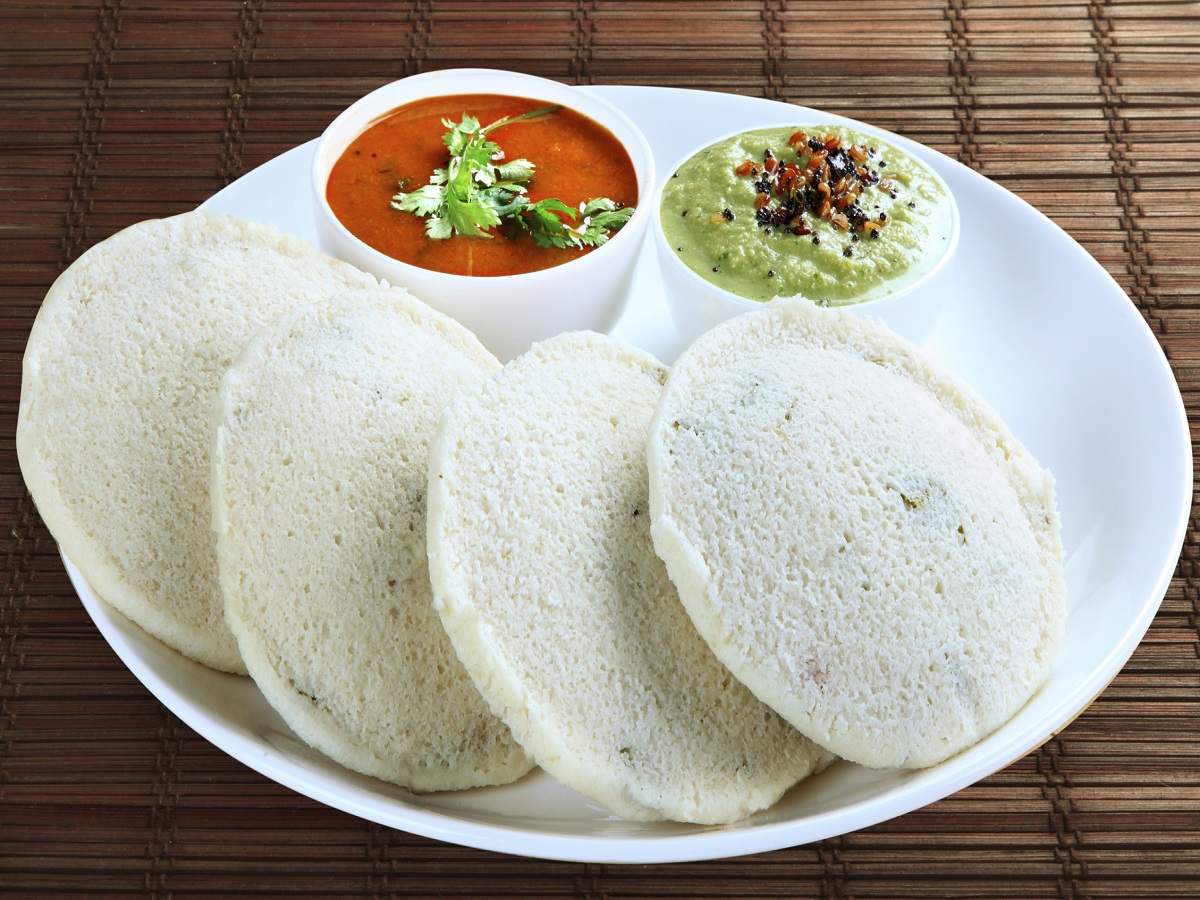
Ingredients:
- 1 ½ cups parboiled rice.
- 1/2 cup urad dal.
- Salt to taste (optional).
How To Make:
- Soak rice and dal in separate vessels for 5-6 hours.
- Grind the dal to a smooth puree, followed by coarsely grinding the rice.
- Mix the two ingredients together and season with salt.
- Add water to modify the consistency. The batter should be flowing, not runny.
- Let it ferment overnight.
- Once fermented, steam the mixture in an idli steamer.
- Cut the cooled idli into little pieces for your infant.
9. Steamed Dosa
This is another variety of finger food your little one is sure to enjoy. Let’s check out what you need to make some steamed dosa for your baby.
Ingredients:
- 1 cup parboiled or dosa rice.
- 1/3 cup urad dal.
- A few fenugreek (methi) seeds.
- 1 tbsp of flattened rice (Avalakki)
- Ghee (as needed).
How To Make:
- Soak rice, fenugreek seeds, and flattened rice in one pot, and urad dal in another. Soak the ingredients for a minimum of three hours.
- Grind the rice, fenugreek seeds, and flattened rice into a fine paste.
- Grind the urad dal to a fine paste.
- Combine rice and dal mixture together.
- Add water to get the desired consistency, which should be neither too thick nor too thin.
- Allow the batter to ferment for 6–8 hours.
- Prepare the dosa by heating a nonstick pan.
- Spread a dollop of the mixture into a tiny circle on the pan.
- Cook until golden brown and bubbles appear on top, adding ghee as required.
- Once cooked, transfer the dosa to a platter and cut into little pieces for your baby to consume.
10. Fruit Salad
Yes, fruit salad can also be a good finger-food dish for your little one. You can add as many fruits as you want to this dish and let your baby enjoy varied tastes and textures. You may choose to skip a few fruits if you think your baby could choke on them or leave the ones he is allergic to.
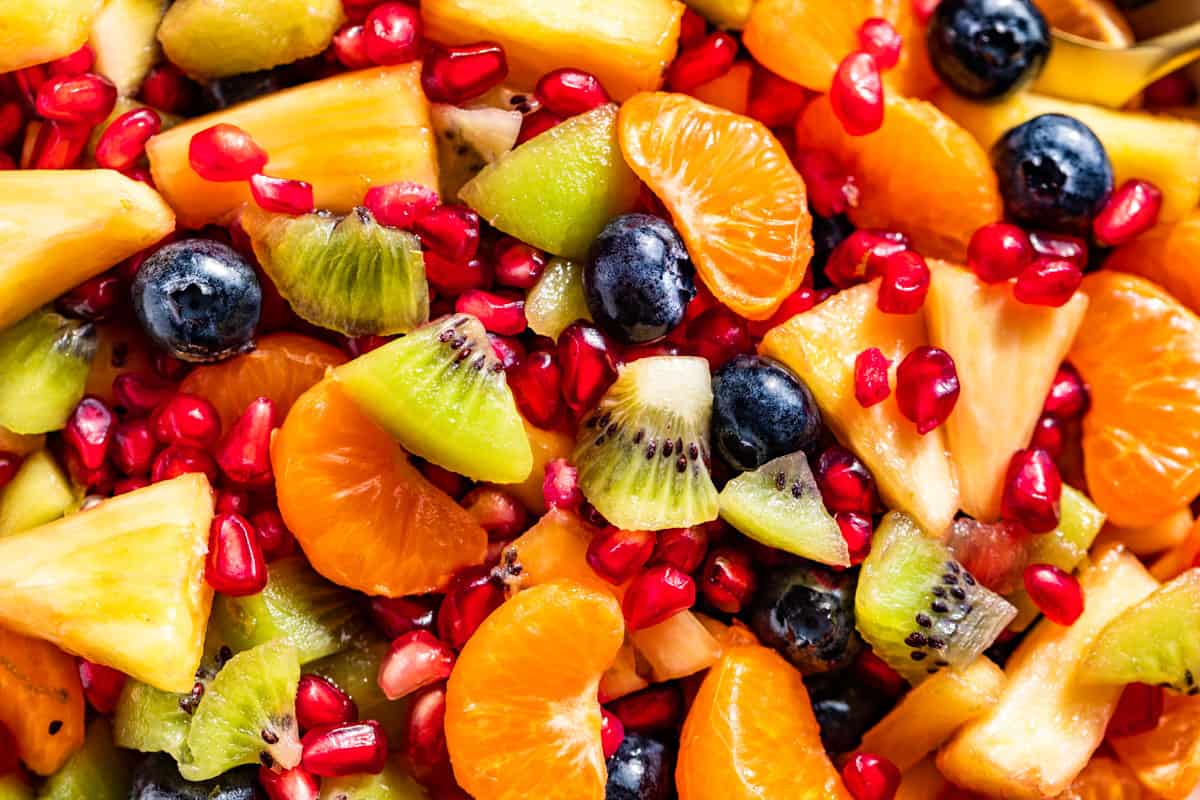
Ingredients:
- Various types of fruits, like an apple, a banana, kiwis, strawberries, etc.
- Black salt (optional)
How to Make:
- Peel and cut the fruits, small enough for the baby to chew.
- Add a little black salt, give it a good mix and let your baby enjoy it.
11. Cheesy Crackers
Cheesy crackers are perfect if you want to add a little crunchy texture that sort of melts in the mouth in no time. This recipe is perfect for your baby’s snack time.
Ingredients:
- 1 cup plain flour
- 1 cup grated cheese
- 2 tbsp unsalted butter
- Water, if required
How to Make:
- Beat the butter and cheese together until it becomes soft and fluffy. It is best to use an electric blender to do this.
- Add the flour bit by bit to the beaten mixture and mix until you get a crumbly mixture.
- Add some water to make a moist dough.
- Wrap the dough in a cling film and keep it in the fridge for an hour.
- After an hour, remove the film and roll out the dough. Using small round cutters, cut out small round biscuits and prick them with a fork.
- Then, bake the crackers in a preheated oven for 15 minutes at 180 degrees Celcius (till the crackers turn golden brown).
- Let your baby munch on these crackers when they are cooled down to room temperature.
12. Zucchini Chips
This recipe is a great alternative to other unhealthy chips. Here’s what you need to make them.
Ingredients:
- 1 zucchini (cut into thin strips)
- 1 tbsp olive oil
How to Make:
- Preheat the oven to 100-110° Celcius.
- Drizzle some olive oil over the zucchini slices.
- Place the zucchini slices in a single layer on a baking tray.
- Bake the chips for 30 minutes, take the tray out and flip all the chips.
- Bake for another 30 minutes.
- Let the chips cool before you let your baby have some.
13. French Toast Fingers
French toast fingers can be a breakfast recipe or an evening snack. It is a delicious way to feed some milk and bread to your little one. This recipe usually has eggs in it but if your little one is under 1 year old, you should avoid adding eggs. You can use cornstarch instead. Here’s what you need for some French toast.
Ingredients:
- 1 tbsp cornstarch
- 1-2 tbsp of milk
- 2-3 slices of whole wheat bread
- A pinch of salt (optional)
How to Make:
- Take the milk and salt in a bowl and add cornstarch to it. Mix well.
- Trim down the crust from each slice of bread.
- Heat a pan on medium flame.
- Lightly grease the pan with butter.
- Dip a slice of bread in the cornstarch and milk mixture.
- Remove it immediately and fry it in the pan till it turns golden brown on both sides.
- Cut the slice into 3 to 4 strips and let your baby have it when it cools down.
14. Vegetable Parathas
Vegetable parathas are a great way to feed your baby most of the vegetables he resists. Make them in smaller sizes, and you don’t have to worry about cutting them for him. Here’s what you need to make some vegetable parathas.
Ingredients:
- 1/2 cup of mashed vegetables of your choice
- 1 cup of wheat flour
- Oil/ butter
- A pinch of salt (optional)
How to Make:
- Mix the vegetable mash with wheat flour.
- Add some water and make a soft dough.
- Roll out small round flatbreads with a rolling pin.
- Heat a pan and grease it with oil/butter.
- Cook both sides of the paratha on a medium flame.
- Serve when the parathas cool down.
15. Paneer Sticks
Paneer sticks are a great way to add some protein to your baby’s snack time. Read on to know how you can make this recipe.
Ingredients:
- Paneer (cottage cheese)
- Ghee/oil
- A pinch of salt (optional)
- A pinch of turmeric (optional)
How to Make:
- Cut the paneer into long strips.
- You may marinate the strips with a pinch of salt and turmeric if you wish to.
- In a pan, put a little oil or ghee.
- Lightly sauté the paneer strips over medium heat until they turn golden brown.
- Bring the temperature down before you feed paneer sticks to your baby.
16. Avocado Toast Strips
This recipe provides healthy fats and fiber from the avocado and whole-grain bread, making it a nutritious choice for your baby.
Ingredients:
- 1 slice of whole-grain bread
- 1/2 ripe avocado
How to Make:
- Toast the slice of whole-grain bread until it’s crispy but not too hard.
- Cut the ripe avocado in half and remove the pit. Scoop out a small amount of the avocado flesh.
- Mash the avocado with a fork until it’s smooth and easy to spread.
- Spread the mashed avocado onto the toasted bread.
- Cut the avocado toast into strips or bite-sized pieces that are easy for your baby to hold.
- Serve the avocado toast strips to your baby as a nutritious and soft finger food option.
Other Finger Foods for Babies Without Teeth
These finger meals for a 6-month-old infant with no teeth are appropriate for babies who are just beginning to try solid foods. Always chop or prepare them into little, bite-sized pieces and attentively observe your baby as they eat to protect their safety.
- Apple and carrots.
- Cheddar cheese and figs
- Banana and cherry
- Tomato with fresh mozzarella
- Peas and Plums
- Pears with Green beans
- Peach with butternut squash
- Apricots with Swiss Cheese
- Beets, Macaroni and Cheese
- Roast apples with chicken.
A Baby Without Teeth: Tips for Introducing Finger Foods
Introducing finger foods to a newborn without teeth is thrilling, but safety and fun are crucial. Remember these key points:
- Cut or prepare finger foods into bite-sized pieces your baby can hold and chew. Keep the texture smooth and controllable without teeth.
- To avoid choking, watch your infant consume finger foods. Provide assistance if required.
- Check for allergies and sensitivities before introducing new foods. Common allergic foods including eggs, dairy, and nuts should be introduced gently.
- Offer a range of meals to introduce your infant to new tastes and sensations. This develops a varied taste and provides important nutrients from numerous sources.
FAQs'
Can a baby with no teeth eat finger foods?
Fiber-rich green beans and mild-flavored pears are good finger meals for newborns who do not have teeth. They may be pureed or chopped into soft, bite-sized pieces, much like other fruits and vegetables.
What textured foods can babies eat with no teeth?
Begin with menu items such as soft cheese, little pieces of pasta or bread, finely chopped soft vegetables, and fruits like bananas, avocado, and ripe peaches or nectarines. Because your baby's teeth may not be fully developed, these meals should require little chewing.
How do I introduce solids to my baby with no teeth?
Vegetables, fruits, and proteins are excellent starting foods. Purée or mash them with a spoon to ensure your infant can eat them safely. From then, you may go to smaller bits of food, but avoid spherical things like grapes and hot dogs, which are the same shape as your child's esophagus and so represent a choking risk.
Can a 7 month old eat scrambled eggs?
If your doctor approves it, you may feed your infant the whole egg (yolk and white). Around 6 months old, puree or mash one hard-boiled or scrambled egg and offer it to your infant. Add water or breast milk to get a more liquid consistency. Scrambled egg bits make an excellent finger snack for children aged 8 months and above.

